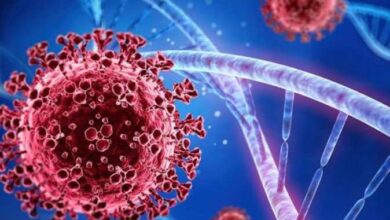
An ongoing pandemic in the age of the internet means that misinformation can and will spread more quickly than facts.
Faced with a torrent of allegations about the coronavirus and its causes, you may wonder whether gargling with salt water is a cure, if the virus was man-made in a Chinese laboratory, or if this is step one in Bill Gates’ plan to microchip us all.
To help you, we have compiled eight confirmed facts about coronavirus for you to remember.
Fact (1): The mask helps prevent the spread of the coronavirus.
Numerous theoretical studies show that masks reduce the risk of infection. Robert Redfield, director of the Centers for Disease Control and Prevention, testified before the US Senate last September that masks are the most important and most powerful tool for public health to combat the pandemic.
Fact (2): There is no known treatment for coronavirus.
No medicine or treatment has been found to eradicate the disease. Since the emergence of the coronavirus in China in late 2019, countless false rumors have spread about potential treatments, from drinking disinfectants to inhaling cocaine. The Food and Drug Administration has issued nearly 150 warning letters to companies that fraudulently promise a treatment or preventative method.
Fact (3): Hospitals gain no benefit from diagnosing you with coronavirus.
Another lie that has spread states that hospitals are financially motivated to over-diagnose people with the virus, but there has been no evidence that hospitals tamper with tests.
Fact (4): Coronavirus is more deadly than influenza.
Unfortunately, coronavirus is more deadly than seasonal influenza. About two percent of diagnosed coronavirus cases were critical and resulted in death, compared to 0.1 percent of diagnosed influenza cases.
Fact (5): The vaccine does not alter the DNA of a person.
The Pfizer and Moderna vaccines are based on a new technology that uses a piece of genetic material called messenger RNA (mRNA). This RNA marks protein-building cells on the surface of the coronavirus, causing the immune system to recognize and block the real virus.
This pioneering technology contrasts with traditional vaccines, which introduce an inactivated or weakened version of the virus into the immune system. But despite claims otherwise, the coronavirus vaccine that uses mRNA does not affect or interact with a person’s DNA, according to the CDC.
Fact (6): Staying home, using hand sanitizer and washing your hands often is healthy.
None of these behaviors, which are recommended to prevent the spread of the coronavirus, pose a threat to our immune system, despite claims that they do. The rumor stems from the fact that young children who are exposed to germs are less likely to have allergies and immune diseases. However, this concept does not apply to adults, whose immune systems have already been boosted by exposure to bacteria.
While the hygiene hypothesis may also be the reason for the false assumption that hand sanitizer and hand-washing weaken our immune system, scientists at the Cleveland Clinic say there is no evidence that temporarily increasing hygiene procedures is harmful.
Fact (7): Scientists believe that the coronavirus originated in animals.
Claims that the coronavirus was man-made in a Chinese laboratory persist, although virologists and public health officials have repeatedly made clear that the virus’s genome indicated that it was made naturally in nature. The rumor stated that the virus was accidentally leaked from a laboratory that was studying pathogens transmitted by bats in Wuhan, the city where the coronavirus originated.
Fact (8): Urging at-risk people and the elderly to stay home and allow others to lead a normal life will not solve the crisis.
Aside from basic human morality and ethics, isolating vulnerable people and allowing others to do their usual business will lead to many problems.
Washington Post columnist Megan McCardle wrote that hospitals may still be overwhelmed with people, and that it is nearly impossible to prevent high-risk people from interacting with others.
While many young people may experience mild or asymptomatic cases of coronavirus, the disease can be dangerous for others. The Centers for Disease Control and Prevention (CDC) data showed that patients aged 49 and younger accounted for 23.1 percent of hospitalizations in the US due to COVID-19. While people with underlying conditions are more likely to be hospitalized or die. CDC figures from June showed that 7.6 percent of patients without symptoms have been hospitalized.
Allowing people to interact freely, as if there was no pandemic, would enable the virus to pass through the population more quickly, straining the capacities of already overburdened hospitals and overworked doctors.
Edited translation from Al-Masry Al-Youm
FILE PHOTO: A security man takes temperature of a woman amid the outbreak of the coronavirus disease (COVID-19) at Dubai International Airport, UAE April 27, 2020. REUTERS/Ahmed Jadallah




